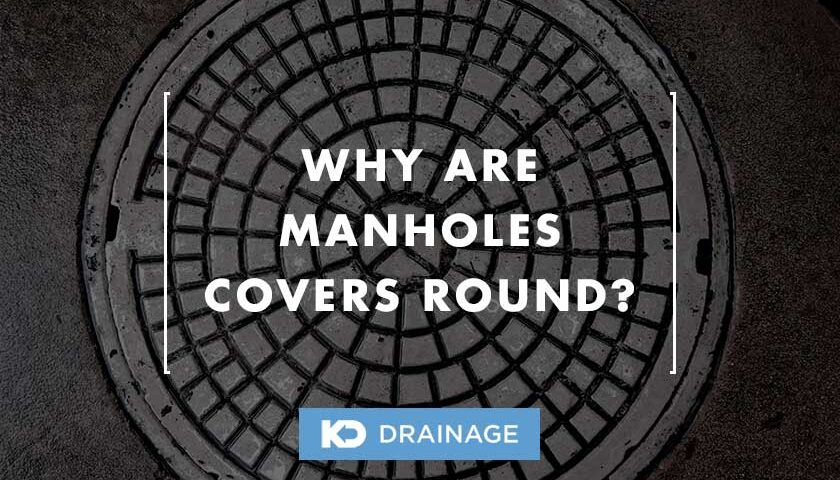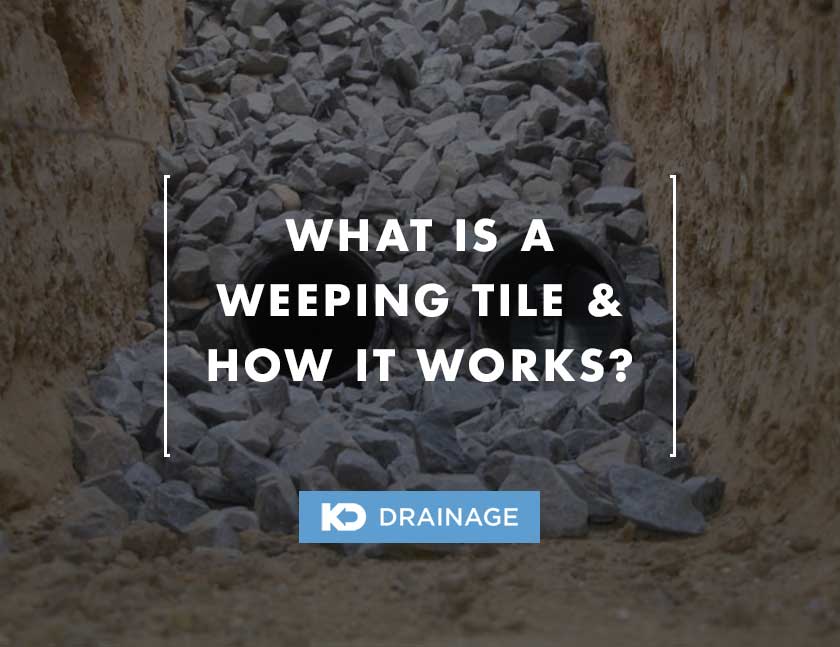
What is a Weeping Tile & How It Works?
1 January 2024
Attenuation Ponds – What They Are & How They Work
1 March 2024Why are Manhole Covers Round?
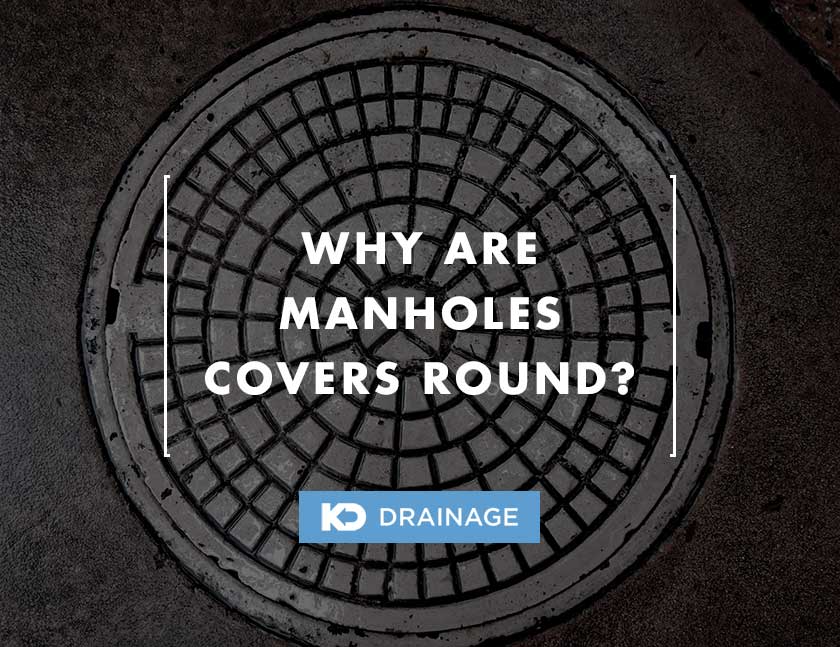
Manhole covers, those unassuming urban portals scattered across cityscapes, form an integral part of our infrastructure.
Yet, amidst the hustle of city life, their significance often goes unnoticed.
Have you ever wondered ‘why are manholes covers round?’
This article will answer the question, why are manhole covers round, and explore the fascinating world concealed beneath the circular lids of manholes.
Table of Contents
What is a Manhole?
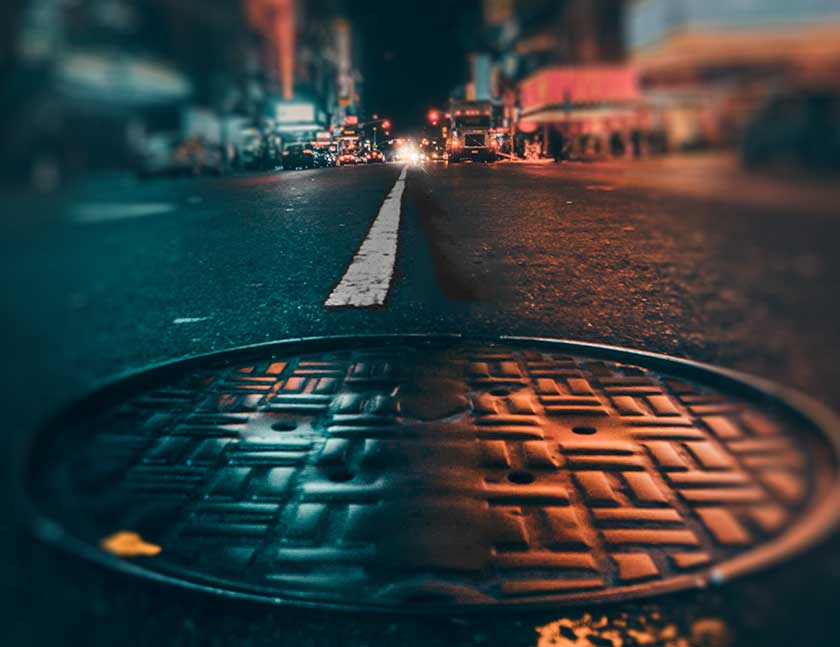
Manholes are vital for urban infrastructure
Before we get onto the question of why are manhole covers round, we need to understand exactly what is a manhole?
A manhole, sometimes called a utility hole or maintenance hole, is a critical infrastructure element found in streets and pavements.
Serving as access points to an intricate network of underground utilities, including sewers, storm drains, electrical conduits, and telecommunication cables, manholes facilitate essential tasks such as maintenance, inspections, and repairs.
These concealed portals are indispensable for ensuring the seamless functioning of urban utilities.
Why are Manholes Used?
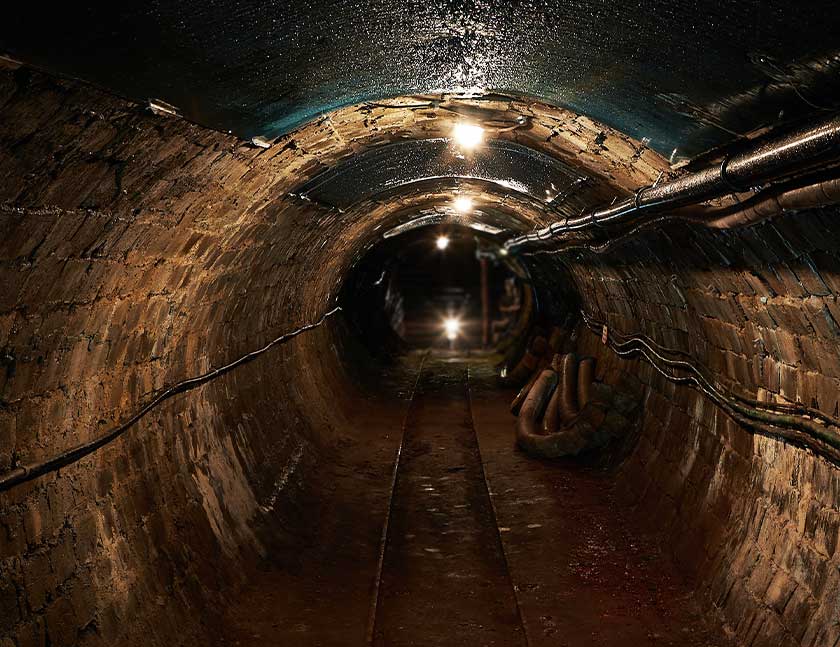
Manholes are used for sewer maintenance
Manholes serve several purposes:
Utility Access
Manholes are essential for utility access, providing entry points for maintenance tasks such as clearing blocked drains and repairing electrical cables.
This direct access is crucial for sewage maintenance and ensuring the functionality and longevity of underground utility systems.
Inspections and Testing
Manholes act as entry points for inspections and testing of utility lines.
Whether it’s checking the integrity of sewer systems or testing electrical conduits, these access points allow for comprehensive assessments and necessary repairs.
Emergency Access
In emergency situations, quick access to critical infrastructure is vital. Manholes serve as immediate entry points, allowing utility workers to respond rapidly to issues like leaks, blockages, or electrical failures.
This quick response is crucial for minimising damage and ensuring public safety.
Versatility
The versatility of manholes is a key factor in their widespread use.
They accommodate the diverse needs of underground utility systems, providing access for different maintenance and inspection requirements.
This adaptability makes manholes indispensable components of urban infrastructure.
Why are Manholes Covers Round?
The round shape of manholes is not arbitrary; it’s a deliberate and practical design choice.
There are several reasons behind the preference for a circular shape:
Safety
The circular shape of manhole covers is integral to safety.
When positioned correctly, a circular cover can’t fall through its opening.
It securely sits on the rim, eliminating the risk of slipping into the hole. This design is crucial for ensuring the safety of pedestrians and workers navigating urban landscapes.
Easier to Manufacture
Circular manhole covers are preferred for their simplicity in manufacturing.
Creating a round shape is more straightforward and cost-effective than producing square or rectangular covers.
The forging process is streamlined, requiring less material and manufacturing effort, contributing to overall efficiency.
Rolling Stability
Circular covers exhibit predictable rolling stability when displaced.
This predictability is a safety feature, especially in high-traffic urban areas.
In contrast, a square cover might fall unpredictably into the opening, posing risks to both workers and pedestrians.
Uniformity
Circular designs allow for standardisation, irrespective of the cover’s orientation.
This uniformity simplifies the manufacturing process and ensures that covers are interchangeable.
This standardisation is a practical advantage in the mass production of manhole covers.
What are Manhole Covers Made From?
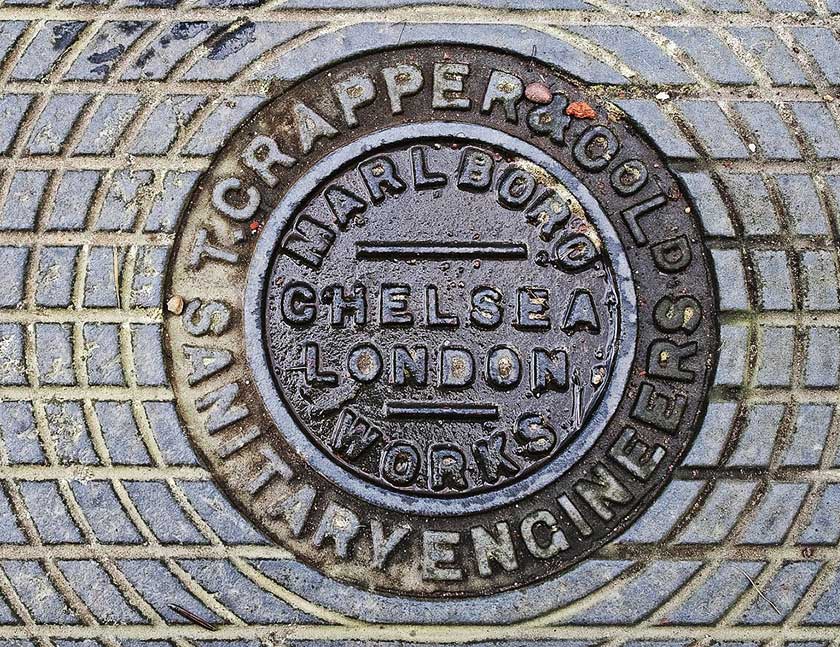
Round manhole covers are made from a variety of materials
Manhole covers are typically made from materials:
Cast Iron
Cast iron is a prevalent choice for manhole covers due to its exceptional durability, resistance to wear, and ability to withstand heavy loads.
Its robust nature makes it suitable for high-traffic urban areas where durability is paramount.
Concrete
Concrete manhole covers, while lighter than cast iron, are still sturdy and durable.
They offer a balance between strength and weight, making them suitable for various applications.
Concrete covers are often used in areas where weight considerations are relevant, and their durability is still essential.
Composite Materials
Composite materials, a combination of various materials like fibreglass and resin, provide an excellent balance between strength and weight.
These covers offer durability along with a lighter structure, making them versatile for different applications.
The composite nature allows for customization based on specific requirements.
What are the Challenges When Using Manhole Covers?
Even though manholes are a vital necessity, challenges still arise with their use.
Safety Risks During Maintenance
While manholes are designed to provide safe access to underground utilities, maintenance activities within these confined spaces can pose safety risks.
Workers may encounter issues such as poor ventilation, the presence of hazardous gases, or the risk of falls.
Adequate safety measures, including proper training and equipment, are essential to mitigate these challenges.
Traffic Disruption During Maintenance
Accessing manholes for maintenance often requires temporarily closing sections of roads or pavements.
This can disrupt traffic flow and pedestrian movement, causing inconvenience to the public.
Effective planning and communication are necessary to minimise these disruptions and ensure the safety of both workers and the community.
Potential for Illegal Activities
The presence of manholes can pose a security risk, as unauthorised individuals may attempt to access them for illegal activities.
This could include vandalism, theft of infrastructure components, or tampering with utility lines.
Adequate security measures, such as locking mechanisms and surveillance, are necessary to prevent such unauthorised access.
Corrosion and Wear
Manhole covers, often made of materials like cast iron, are susceptible to corrosion over time, especially in regions with harsh weather conditions.
Corrosion can weaken the covers, reducing their load-bearing capacity and posing safety risks.
Regular inspections and maintenance are required to address issues of corrosion and wear.
Inadequate Standardisation
While circular manhole covers are designed for uniformity and standardisation, variations in size and design still exist.
In some cases, covers may not fit perfectly, leading to safety hazards and difficulties in maintenance.
Standardisation efforts need to be consistently implemented to address these challenges.
Ageing Infrastructure
Many urban areas have ageing infrastructure, including manholes, which may not meet modern standards.
Ageing manholes can face challenges such as structural degradation, leaks, or inadequate support.
Upgrading and replacing these older structures present logistical and financial challenges.
Environmental Impact
Construction and maintenance activities related to manholes can have environmental impacts.
Excavation and material disposal may generate waste, and accidental spills of hazardous substances can occur.
Implementing environmentally friendly practices and adhering to regulations are crucial to mitigate these impacts.
Limited Technological Integration
The integration of modern technologies, such as sensors for real-time monitoring or smart grids for utility management, is often limited in traditional manhole infrastructure.
Incorporating these technologies can enhance efficiency, but retrofitting existing manholes can be a logistical challenge.
Conclusion
The humble manhole cover, with its unassuming circular cover, is a marvel of practical design.
Its shape, chosen for safety, manufacturing simplicity, and operational convenience, showcases the thoughtful engineering behind seemingly ordinary urban features.
Hopefully this article has given you an answer to the question, why are manhole covers round, and have gained a layer of appreciation for the functionality that keeps our cities running smoothly.

